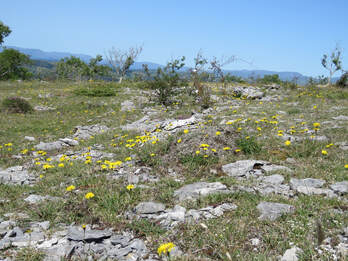 Drifts of compositae on Scout Scar
Drifts of compositae on Scout Scar
 Drifts of compositae on Scout Scar Drifts of compositae on Scout Scar To interpret butterflies on Scout Scar in late June I am alert to season, to when new broods emerge and to the way the morning's weather develops. A blaze of blue sky with a mid-morning breeze that is pleasant. Micro-moths about drifts of yellow hawkbit. Painted ladies scarcely settle. A glimpse of common blue and fritillary but larger butterflies are restless. Someone sees an adder or was it a slow worm? By late morning there comes a surge of hot and humid air, a reminder that France suffers with a record temperature of 46.9 degrees.
0 Comments
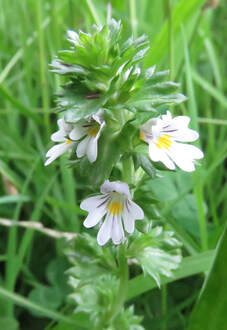 Eyebright in a Dentdale Hay meadow Eyebright in a Dentdale Hay meadow Eyebright and yellow rattle are key plants of the flower-rich hay meadows of Dentdale. Hemi-parasitic, they work their magic secretly, tapping into grass roots to take up nutrients and water, weakening their host grasses to give traditional flowers of the hay meadow an opportunity to thrive. Eyebright and yellow rattle are annuals so their seed must set before the meadow is mown, in mid-July. This morning, Farming Today casts further light on the importance of hay meadows and their traditional management. On either side of the River Dee there are meadows and we pass farmhouses and barns, a pastoral landscape. Rising in the distance, the moors and uplands where a hundred years ago curlew bred, a ground-nesting bird in dramatic decline. The curlew habit has changed and now the bird breeds increasingly in hay meadows, requiring some two months to incubate and rear its young. No topping or mowing during that time. 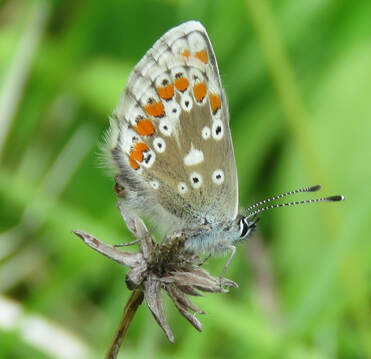 Underwing of Northern Brown Argus Underwing of Northern Brown Argus At Waitby Greenriggs, fragrance of flowers after rain, elusive fragrances. Marsh helleborine are a speciality but we were too early and found only flower-stems with pale buds. The surprise was globe flowers, a bank thick with them. And the white flowers of lesser butterfly orchid. There were Northern marsh orchid, tway blade, common spotted orchid, fragrant orchid, a fly orchid and hybrids various. A few tiny flowers of bird’s-eye primrose grew on the limestone bank above the disused railway line, and in the ditch. Yellow rattle in abundance. Frog hoppers lurked in cuckoo spit, like bubble wrap about flower stems. 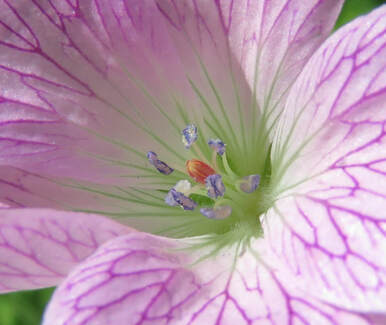 Corolla with guide-lines leading bees to pollen and nectar on anther and stamens. Corolla with guide-lines leading bees to pollen and nectar on anther and stamens. The air is loud with bees flying to the next white flowers of lace-cap hydrangea. Spurts of bee-sonification transmit requests for nectar, signalling flowers to prepare a welcome. The lace-cap hydrangea trembles and hums with bees. Sheen on bee wings caught in sunlight, membranous wings of the Hymenoptera. Hairs on head, thorax and abdomen, dusted with mites and pollen brushed over bees as they delve into flowers. Legs jointed and hairy, tarsus claws lock onto flower stems. Amongst the hairs, small movable plates of chitin covered in a layer of wax, like polished armour: the bees’ exoskeleton. 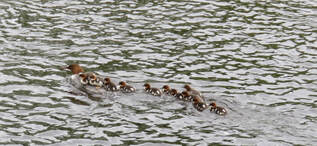 Female goosander with ducklings hitching a ride Female goosander with ducklings hitching a ride A female goosander appears toward the far bank of the River Kent, her eleven ducklings feeding about her. My second goosander family this week. They swim closer and next moment the foremost ducklings are riding on her back and the rest of her brood swims head-to-tail behind her. She heads up-stream and I must follow. |
Archives
July 2024
Categories
All
|
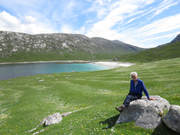
 RSS Feed
RSS Feed